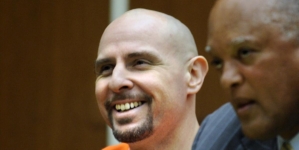-
2025 College Basketball Crown highlights: Johnson’s “moon-ball” lifts UCF into semifinals - 4 mins ago
-
Nursing influencer and wife of L.A. firefighter dies after giving birth to their son - 30 mins ago
-
What happened the night Tupac was killed? - 35 mins ago
-
Dodgers Place Freddie Freeman on Injured List - 35 mins ago
-
‘Top Gun’ star Val Kilmer remembered by his family for ‘extraordinary’ life - 39 mins ago
-
Aaron Judge joins elite Yankees company with 500th extra-base hit (yes, it was a HR) - 46 mins ago
-
Ex-boyfriend suspected of shooting L.A. mom and daughter is on the run - about 1 hour ago
-
New York Giants, Cleveland Browns Trade Up for Quarterbacks in Latest NFL Mock Draft - about 1 hour ago
-
‘Yellowstone’ star Lainey Wilson wants ‘very simple’ wedding with Devlin ‘Duck’ Hodges - about 1 hour ago
-
Fla. man allegedly looked up ‘dent in baby forehead’ before he and woman brought infant to hospital - about 1 hour ago
L.A. County to use teeth, DNA to identify fire victims
It could take anywhere from days to weeks to identify the remains of people killed in the Eaton and Palisades fires using dental records or DNA, said Dr. Odey Ukpo, L.A. County’s chief medical examiner.
After the firefighters had moved on from neighborhoods reduced to rubble, officials from a different arm of local government arrived in white vans.
Investigators from the Los Angeles County Medical Examiner sifted through razed homes in Altadena and Malibu on Thursday to recover the remains of at least five people killed in the Eaton and Palisades fires.
It could take anywhere from days to weeks to identify the bodies using dental records or DNA, said Dr. Odey Ukpo, Los Angeles County’s chief medical examiner.
Most fire victims are, “for lack of a better word, charred,” Ukpo told the Los Angeles Times. Identifiers such as fingerprints or facial features are lost.
Identified tentatively as John or Jane Does, the bodies will be transported to the medical examiner’s offices near downtown Los Angeles to be autopsied, Ukpo said.
During the autopsy, which determines the manner and cause of a person’s death, pathologists will also examine the body for identifying features.
“For example, if a body has an appendix and we know the person we think it is doesn’t have an appendix, that will help rule it out,” Ukpo said.
Doctors will also look for injuries that might have been obscured by trauma caused by fire, he added.
The medical examiner’s office will first use dental records to make an identification, although that requires doctors to have some idea of who the person is, Ukpo said.
Forensic odontologists obtain dental records of the suspected person and compare the X-rays to the jaws of the body at the medical examiner’s office.
If the body’s jaws and teeth aren’t suitable for comparison, pathologists will take a DNA sample from the body’s organs or blood. The sample will then be compared against DNA from relatives of the person whom the doctors suspect the body to be, Ukpo said.
While dental testing can be completed within days of finishing an autopsy, DNA results can take weeks.
“It takes time to get the right information,” Ukpo said.
Source link































